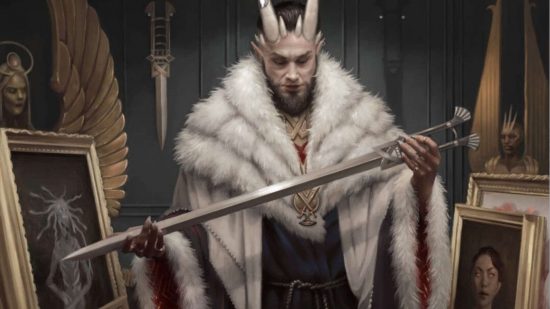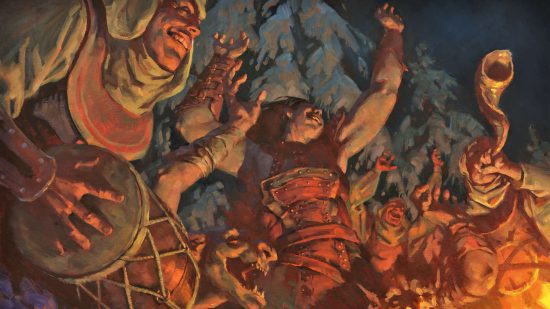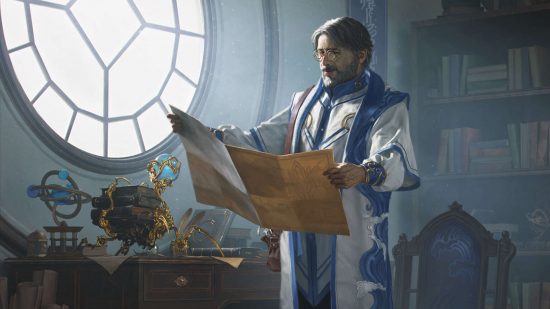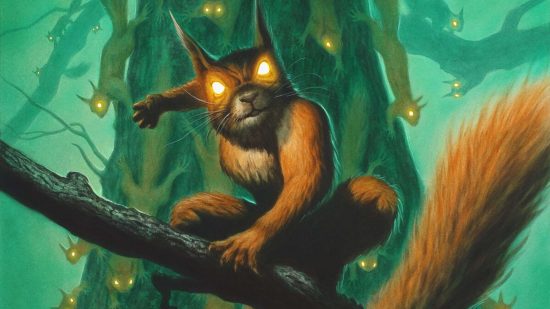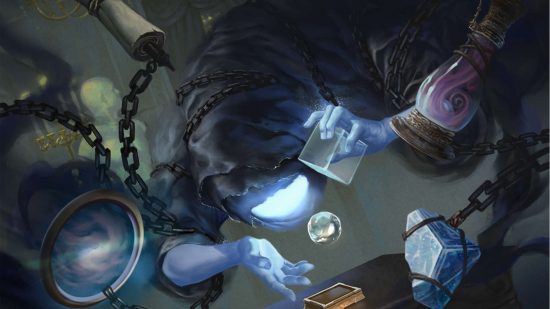On December 8, the CEOs of Hasbro and Wizards of the Coast took part in a fireside chat, addressing a virtual audience with news about the health of the company and particularly Magic the Gathering. Every MTG fansite covered it, speculating beforehand what it might contain, dissecting it in the aftermath.
The closer you follow MTG, the more likely it is that you heard about the fireside chat – maybe you tuned in to a watch-along live stream. But here’s a paradox – if you’re deep enough into MTG that you knew about the fireside chat, you’re also so deep in that it had absolutely nothing to say to you.
I don’t just mean that it didn’t address the things that dyed-in-the-wool MTG fans are concerned about – though, it didn’t. I mean that it was a talk given in a completely different language that just happens to sound like English.
Allow me a digression – I promise it’s illuminating – to explain a theory of science by the American philosopher Thomas Kuhn. He argues that scientific progress isn’t incremental, it happens in great leaps. Scientific theories, and the way of understanding the world that goes with them, don’t mutate – old ones get thrown out, replaced by totally new ones.
Take the Copernican revolution, when scientists stopped believing in a geocentric (earth-centred) solar system and advanced the heliocentric (sun-centred) model. The concept of ‘the sun’ is completely different in the geocentric model compared to the heliocentric model – despite being derived from the same observations of the world.
Despite the incompatibility of the two models, there was a crossover period when the two competed. People on either side of the divide could think they were talking about the same thing – the sun – but mean something completely different.
Magic the Gathering, and all the things that go along with it, mean something completely different, depending on your perspective. Chatterstorm is a neat addition to your squirrel tribal Commander deck, a format breaking powerhouse in Pauper, or worthless chaff in a Modern Horizons 2 box break. One card, three totally different meanings, depending on which MTG world you inhabit.
Offering products to each of those worlds is a core part of Hasbro’s growth strategy, as the CEOs of Hasbro and WOTC explained during the fireside chat. It’s a basic business practice, called ‘customer segmentation’ – it’s why every single shaving brand sells ‘his’ and ‘hers’ soap and razors that (spoiler alert) work equally well on all ‘humans’.
Up until 2016, WOTC had focused on serving only competitive players – but it knew about the others, and it decided to try and sell to them. Draft, Set, and Collector boosters are there to give competitive players, social players, and collectors something to buy during every product release. Challenger decks, MTG commander pre-cons, MTG Secret Lairs, and other supplementary products are all directed at different customer segments.
Heavily invested players, particularly competitive players, have been dissatisfied by the impacts of this strategy – whether it’s the sheer volume of releases making it impossible to keep up with everything, the unintended impacts of commander cards on Legacy and Vintage, mechanics that work on MTG Arena but are a nightmare on paper like Day/Night or Mutate, or extreme ‘for-collectors’ products like the 30th anniversary edition that frustrated players who felt excluded by the exorbitant price.
When the Bank of America published its report into Hasbro’s long-term future and downgraded its quality assessment of the company in November, some MTG fans saw this as vindication of their opinions. When Hasbro’s share price slipped and the company organised the fireside chat to discuss the health of MTG, fans hoped that the company would address the concerns they had.
But the Fireside chat was directed at another group, just as interested in MTG, that understands the game in a completely different way: investors. Investors are customers of Hasbro as much as MTG players are – instead of trading cards, they buy shares. They care about the “health of the game” as much as anyone, even if that phrase means something completely different to them than it does to you or more.
That’s why the fireside chat covered growth strategy, customer and product segmentation, customer sentiment during a downturn, and not ‘the health of standard’ or ‘product burnout’ or ‘broken mechanics’. Not because the topics are embarrassing or awkward, not even because (as Hasbro says in the chat) 80% of MTG players are casuals. They couldn’t be discussed because the fireside chat was delivered to investors, and in their language of MTG, those concepts simply don’t exist.
Something we’ve heard this past year from WOTC spokespeople is: “maybe this product isn’t for you.” That’s a translation from investor language – the original sentiment is actually: “we identified a customer segment, and we made this product for them”. The interrelatedness between MTG products means that’s not a satisfactory answer for the game’s most invested fans, so they went looking for answers. The fireside chat wasn’t the place to look – it was spoken in a different language entirely.
